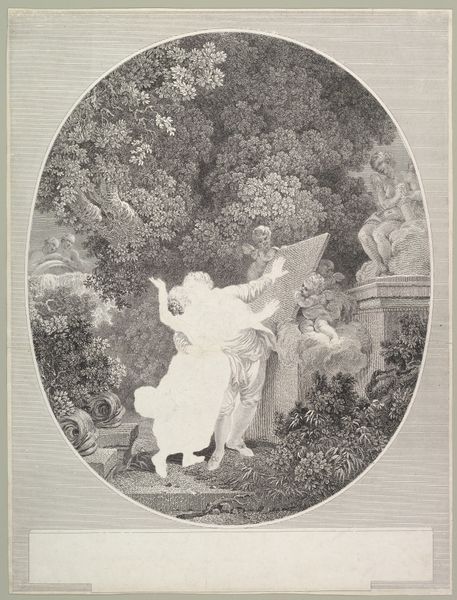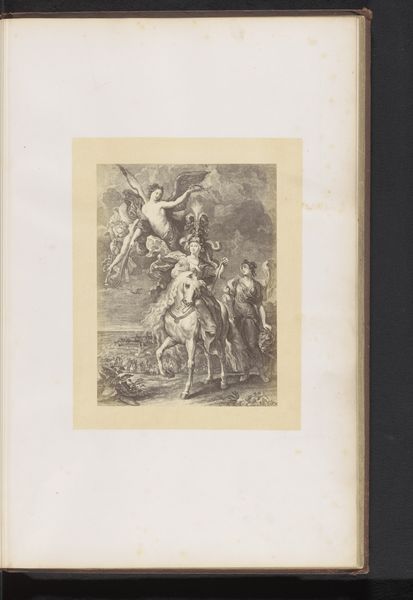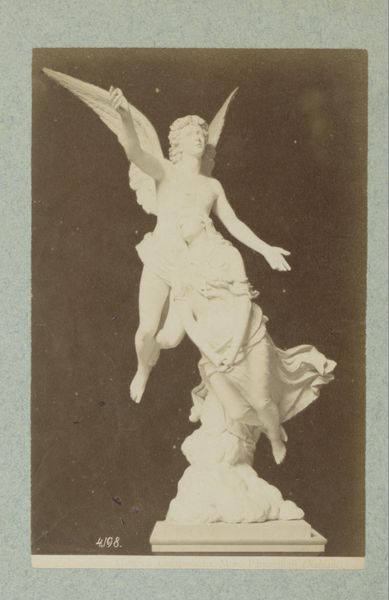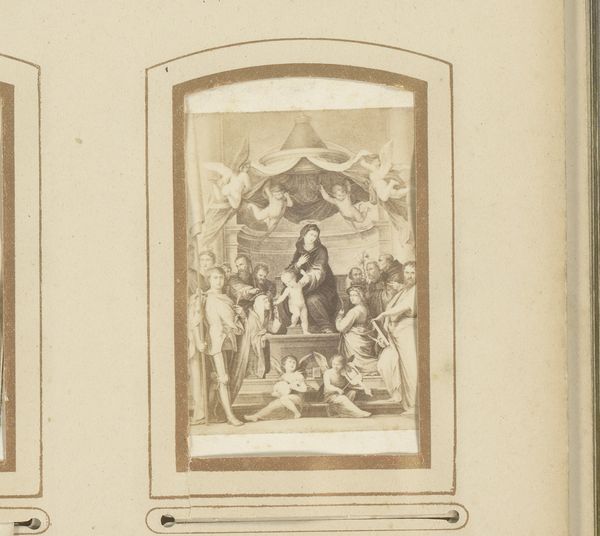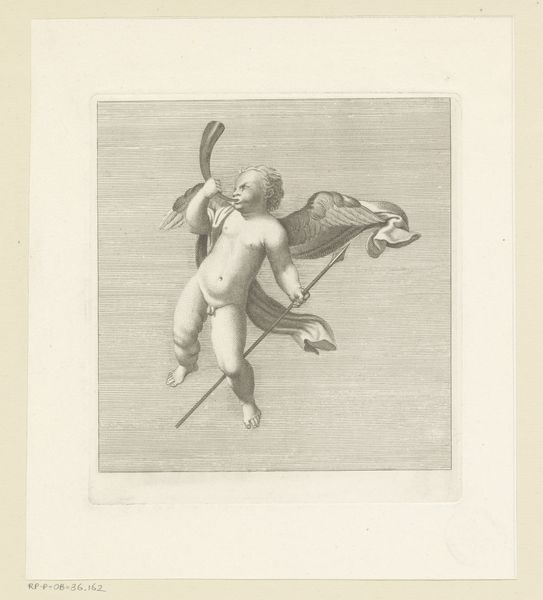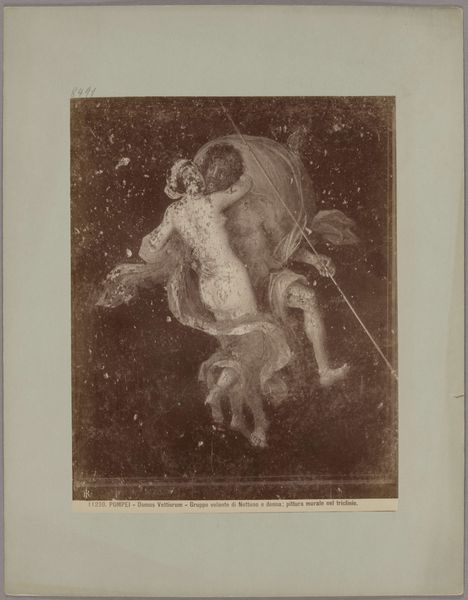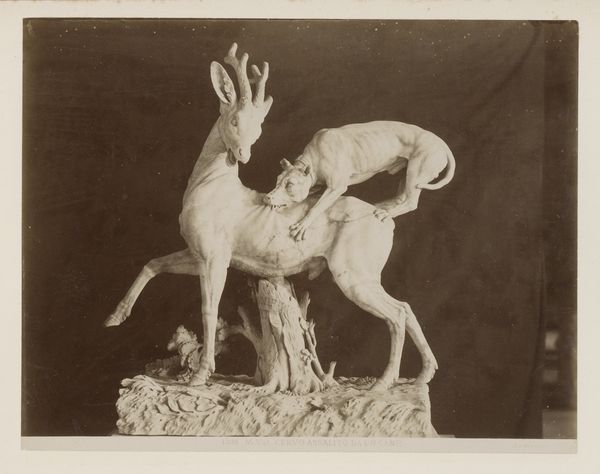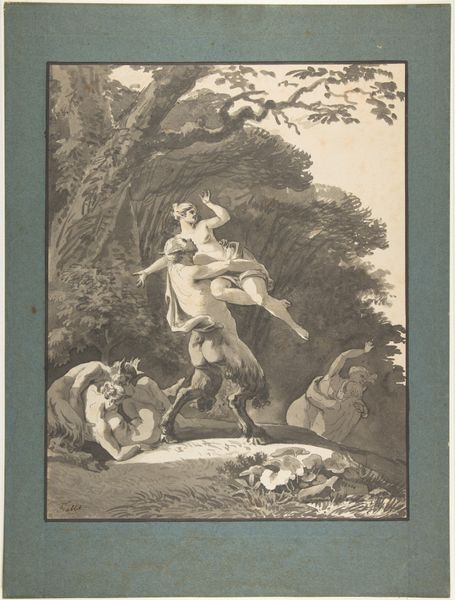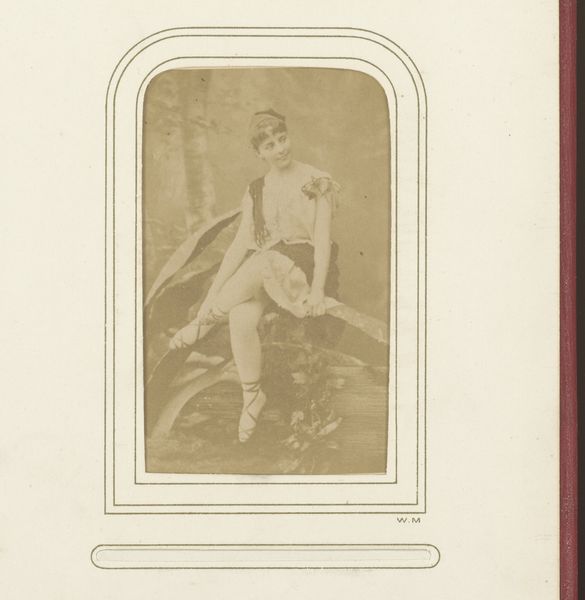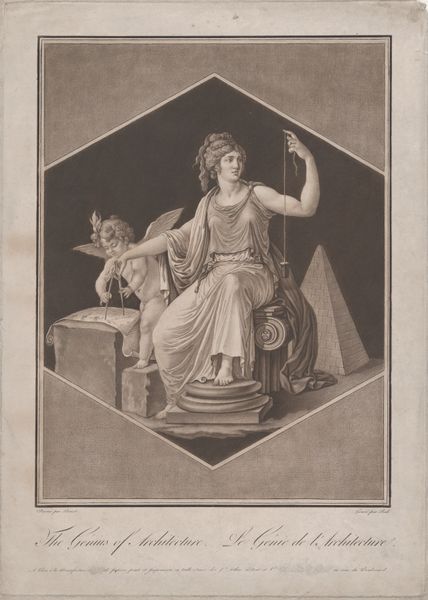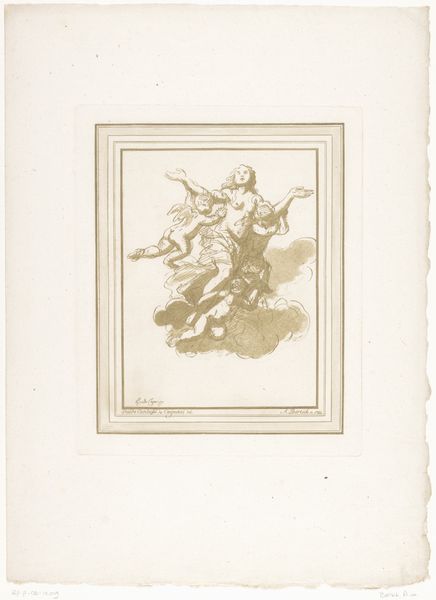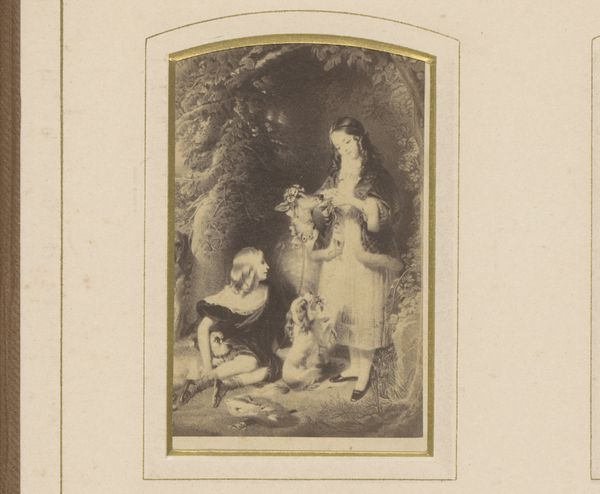
Fotoreproductie van een gipsen kopie van de Löwenkämpfer door Albert Wolff, bij het Altes Museum in Berlijn c. 1870 - 1890
0:00
0:00
photography, sculpture, gelatin-silver-print
#
neoclassicism
#
figuration
#
photography
#
sculpture
#
gelatin-silver-print
Dimensions: height 103 mm, width 63 mm
Copyright: Rijks Museum: Open Domain
Editor: This gelatin-silver print, dating from around 1870 to 1890, captures a plaster cast of Albert Wolff's "Löwenkämpfer" sculpture, which sits near Berlin's Altes Museum. The photo has this otherworldly quality; it feels so staged and deliberate. What strikes you when you look at it? Curator: The staged artifice is key, isn’t it? This isn't just a picture of a sculpture; it's a photograph *of* a reproduction, meticulously crafted for the photographic gaze. It speaks volumes about 19th-century desires to document, categorize, and disseminate cultural heritage through the relatively new medium of photography. But it also makes me consider how power structures are embedded within these processes of replication. Who gets to decide which works are memorialized, and who controls their distribution? How does this relate to Germany's then-burgeoning national identity and its claims to classical artistic tradition? Editor: That's interesting... So the photograph isn't just documenting art but actively participating in building a specific narrative? Curator: Exactly. Neoclassical sculpture was often used to legitimize authority and project ideals of masculine strength and rational order. The 'lion fighter' becomes a metaphor for taming the 'primitive' or 'irrational.' Given the historical context of rising nationalism and colonialism, we must ask, whose 'lions' were they fighting, metaphorically speaking? How did these images reinforce the colonial gaze and project power onto other cultures? Editor: So, unpacking this image means thinking about how it functioned within its time – and how that impacts its meaning now. Curator: Precisely! Considering how photographic reproductions circulated, we reveal connections to the broader social, political, and ideological projects of the era. By engaging with the image critically, we begin to grasp not just its aesthetic qualities but its intricate role in shaping our understanding of history and power. Editor: I see this photo with entirely new eyes. Thank you for bringing that perspective!
Comments
No comments
Be the first to comment and join the conversation on the ultimate creative platform.
